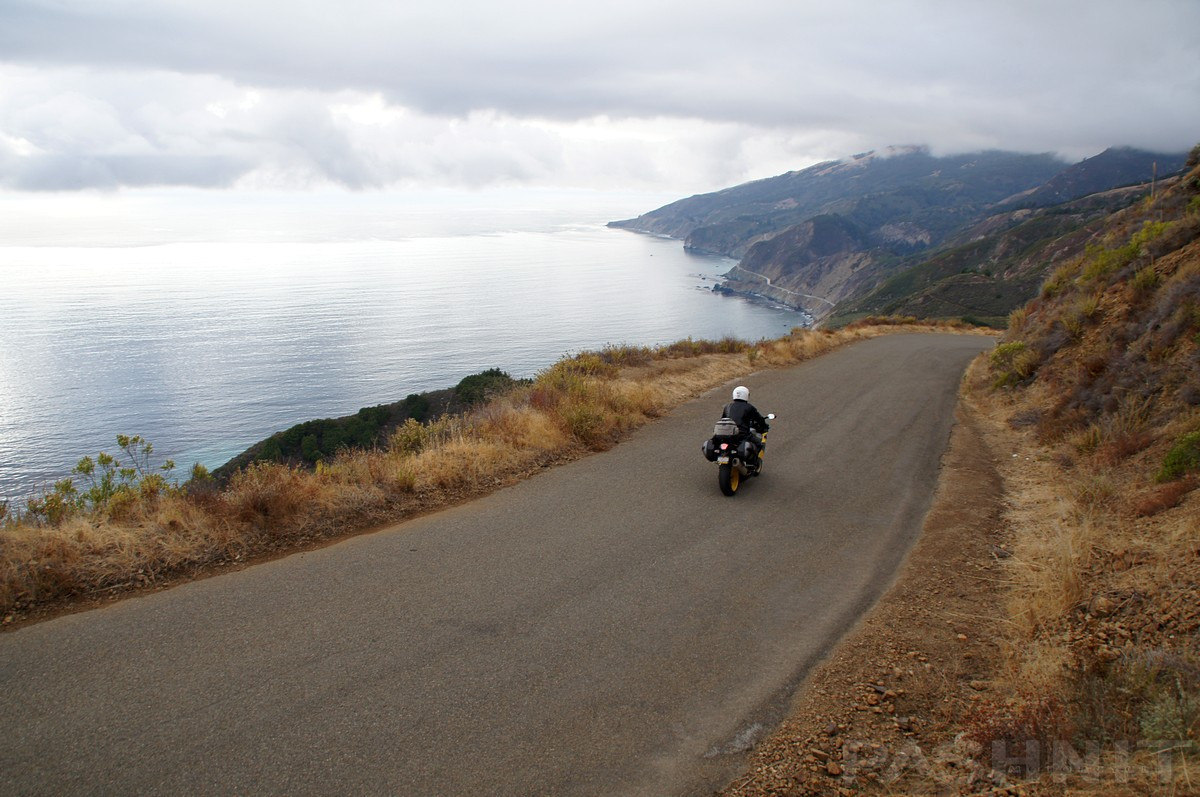You are using an out of date browser. It may not display this or other websites correctly.
You should upgrade or use an alternative browser.
You should upgrade or use an alternative browser.
2024 Pashnit Touring on a Hayabusa
- Thread starter pashnit
- Start date
More options
Meta tagsIn the distance is the art thingy, the Plover Wing Plaza Art Installation, I doubt you'd ever know it was there if you didn't go looking for it, and even then you'd have to know where to look. Super cool place in the middle of nowhere.

This water is only a few inches deep all the way across the lake.

The Sierra Nevada Range, I have to get over that. Home base is on the other side.
I'll have to ride over 200 hundred miles from here along the base of the range to find a way over this time of year.
All the passes are closed. Except one. 200 miles away.

This water is only a few inches deep all the way across the lake.
The Sierra Nevada Range, I have to get over that. Home base is on the other side.
I'll have to ride over 200 hundred miles from here along the base of the range to find a way over this time of year.
All the passes are closed. Except one. 200 miles away.
Last edited:
The snow covered Sierras are gorgeous, up this way too.
Did you see this newest slide on hiway 1? Is Nacimiento road open?

 www.yahoo.com
www.yahoo.com

Part of Highway 1 near Big Sur crumbles as new landslide closes more of historic roadway
Highway 1 is closed indefinitely from Palo Colorado Road to Rocky Creek Bridge, the California Department of Transportation said on social media after a new landslide eroded part of the roadway.
Did you see this newest slide on hiway 1? Is Nacimiento road open?

Nacimiento-Fergusson Rd | California Motorcycle Roads | Pashnit
Best Central California Coast Motorcycle Rides
 www.pashnit.com
www.pashnit.com
Nacimiento Rd is not open, and my guess is likely won't be for a long, long time. Nacimiento Rd was one of my favorite roads.
Highway 1 just keeps falling off into the ocean and CalTrans puts it back together. Just a waiting game to fix it.
Riding 200 miles along the base of the Sierra Nevada Range requires several requisite stops.

 www.pashnit.com
www.pashnit.com
I never miss a quick stop at Manzanar. I've been in the museum so many times, I think I have the placards memorized. But I haven't ridden around the perimeter of the internment camp in quite a few years. The NPS has slowly been improving and restoring the site over the last 20 years.




Manzanar War Internment Camp | California Motorcycle Roads | Pashnit
Ride Inyo County Motorcycle Roads, Eastern Sierra Nevada Range
 www.pashnit.com
www.pashnit.com
I never miss a quick stop at Manzanar. I've been in the museum so many times, I think I have the placards memorized. But I haven't ridden around the perimeter of the internment camp in quite a few years. The NPS has slowly been improving and restoring the site over the last 20 years.
I was pleasantly surprised to find an ongoing restoration of the Japanese gardens in the northwest corner of the camp.
There are many gardens at Manzanar National Historic Site. Some are along the driving tour route and are easy to spot by visitors to this desert landmark. Others are buried beneath layers of sand and debris. Some are simple rock formations, and others are elaborately designed landscapes, with ponds, bridges, streams, and fences.
They were created by the Japanese-Americans who were confined at Manzanar War Relocation Center in the 1940s. It’s estimated that there were, at one point, more than 100 gardens inside the fences and underneath the guard towers at this 814-acre site in eastern California’s Owens Valley. The men and women held there built the gardens between the rows of barracks, outside the mess halls, and along the firebreaks, as a way to improve living conditions and add beauty and hope to the desolate prison landscape.
Using newspaper accounts, oral histories, photographs, consultations with Japanese garden experts, and archaeological excavations, archaeologist are finding and, in some cases, restoring or recreating the gardens. So far, 20 have been excavated, mapped, and stabilized.

The small ponds were full of tumbleweeds

This bridge has always been intriguing as it's the same bridge pictured in the 1945 yearbook of that year's graduating HS class.
Same bridge.

The small ponds were full of tumbleweeds
This bridge has always been intriguing as it's the same bridge pictured in the 1945 yearbook of that year's graduating HS class.
Same bridge.
That's some dark history for you......View attachment 1681297
I was pleasantly surprised to find an ongoing restoration of the Japanese gardens in the northwest corner of the camp.
View attachment 1681298
There are many gardens at Manzanar National Historic Site. Some are along the driving tour route and are easy to spot by visitors to this desert landmark. Others are buried beneath layers of sand and debris. Some are simple rock formations, and others are elaborately designed landscapes, with ponds, bridges, streams, and fences.
They were created by the Japanese-Americans who were confined at Manzanar War Relocation Center in the 1940s. It’s estimated that there were, at one point, more than 100 gardens inside the fences and underneath the guard towers at this 814-acre site in eastern California’s Owens Valley. The men and women held there built the gardens between the rows of barracks, outside the mess halls, and along the firebreaks, as a way to improve living conditions and add beauty and hope to the desolate prison landscape.
View attachment 1681299
Gardens were encouraged as internees planted Victory Gardens within the fire breaks while growing vegetables, which family units consumed themselves and donated excess crop yields to the mess hall. Manzanar was especially known for ornate traditional Japanese gardens. The camp had a higher percentage of professional landscape gardeners in civilian life before the war.
These individuals created elaborate gardens alongside their barracks with large ornate rocks, concrete-lined pools of water, walkways, and bridges. The location of Manzanar being within mere feet of the Sierra Range provided ample raw materials such as large rocks and indigenous plants.

One of these large public gardens remains in the northwest corner of the park, complete with reflecting concrete-lined pool and bridge. Known as Rose Park and Pleasure Park, internees constructed two small ponds, a waterfall, bridge, a Japanese tea house and planted over 100 species of flowers. Camp officials further encouraged these gardens to hold down the soils and allow the internees to beautify the camp. After the WRA provided grass seed, internees grew green lawns in portions of the garden displays. The camp even held a ‘Best Garden Contest’ as a way to encourage internees to create ornamental Japanese gardens.


These individuals created elaborate gardens alongside their barracks with large ornate rocks, concrete-lined pools of water, walkways, and bridges. The location of Manzanar being within mere feet of the Sierra Range provided ample raw materials such as large rocks and indigenous plants.
One of these large public gardens remains in the northwest corner of the park, complete with reflecting concrete-lined pool and bridge. Known as Rose Park and Pleasure Park, internees constructed two small ponds, a waterfall, bridge, a Japanese tea house and planted over 100 species of flowers. Camp officials further encouraged these gardens to hold down the soils and allow the internees to beautify the camp. After the WRA provided grass seed, internees grew green lawns in portions of the garden displays. The camp even held a ‘Best Garden Contest’ as a way to encourage internees to create ornamental Japanese gardens.
Last edited:
After the war, Manzanar was largely forgotten. Buildings were dismantled board by board, and some even transported whole to Lone Pine to serve as outbuildings on farms and ranches. One barrack was transported to nearby Lone Pine and converted to a motel. Looks like the barracks are returning to be restored to 1945 era.


Noticing what desert riding looks like. I may need a new tire when I get back from this ride.

Noticing what desert riding looks like. I may need a new tire when I get back from this ride.
Last edited:
Detour into June Lake - what a view!

June Lake Loop Highway 158 | Mono County | California Motorcycle Roads
Ride Mono County Motorcycle Roads, Eastern Sierra Nevada Mountains
 www.pashnit.com
www.pashnit.com
Elevation here is 7654 ft
Similar threads
- Replies
- 1,589
- Views
- 32,822
- Replies
- 1,156
- Views
- 37,155


